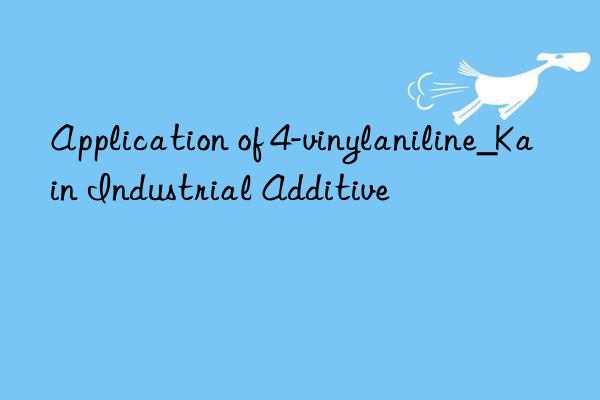
Background and overview[1]
Aromatic amine compounds such as 4-vinylaniline are intermediates in the production of important chemical products such as medicines, dyes, stabilizers, fungicides, insecticides, herbicides, developers, antioxidants and petroleum additives. At present, the main production methods include electrolytic reduction of nitrobenzene derivatives, catalytic hydrogenation, iron powder reduction, biological fermentation, etc. The electrolytic reduction method of nitrobenzene derivatives has high technical difficulty, strict production control requirements, and high power consumption. my country has not yet achieved industrialization. The biological fermentation process is greener and more environmentally friendly, but the production time is longer, the efficiency needs to be improved, and there are a large number of chemicals in the product. Aniline derivatives and a small amount of other impurities affect the production efficiency and product quality of this process. The iron powder reduction method has high production costs, small production scale and serious pollution. Most countries have eliminated this method. The catalytic hydrogenation method uses hydrogenation and reduction under the action of a catalyst to obtain phenylene ammonia derivatives. The process is simple, the product quality is high, the environmental pollution is small, and the development prospects are relatively broad.
Preparation [1-2]
Method 1: The synthesis of 4-vinylaniline is as follows: Take 1.60 g (28.00 mmol) reduced iron powder in a three-necked bottle, add 6.00 mL water and 0.20 mL concentrated hydrochloric acid, stir thoroughly, and use an ice bath to lower the temperature. After reaching 0°C, slowly add 10 mL of ethanol solution of nitrostyrene (1.25 g, 8.40 mmol) under rapid stirring, keep the ice bath reaction for 8 hours, filter to remove the iron powder, add water for hydrolysis, and then extract with dichloromethane. The organic layer is Dry with anhydrous Na2SO4, remove the solvent by rotary distillation, and pass through the column with silica gel. The eluent is petroleum ether/ethyl acetate = 5:1 (v/v) to obtain light yellow solid 4-vinylaniline, yield 70.0%, melting point 24~25 ℃, 1H-NMR (CDCl3, ppm): 7.21-7.23 (d, 2H, Ar−H), 6.64 (d, 2H, Ar−H), 6.57-6.62 (q, 1H, −CH=) , 5.52-5.57 (d, 1H, =CH2), 5.02-5.05 (d, 1H, =CH2), 3.71 (s, 2H, − NH2), 13C-NMR (CDCl3, ppm): 146.23, 136.58, 128.39, 127.40, 115.06, 110.06.
Method 2: In a 30mL high-pressure reactor lined with polytetrafluoroethylene, add 6mL H2O, 0.16g 4-nitrostyrene, and 0.1g reduced catalyst Pt- Sb/TiO2, the mass content of Pt is 0.5%, the molar ratio of Sb to Pt is 7.2:1, the ultrasonic impregnation method is used to load Pt, and the catalyst is in H2Restore at 450℃ for 2h. Tighten the reaction kettle and purge it with high-purity N2 for 5 minutes at room temperature to eliminate the air in the reaction kettle. The reaction kettle was preheated in a constant temperature water bath at 50°C for 20 minutes, filled with 4MPa H2, started stirring, and reacted for 4 hours. The reaction kettle was cooled down, and the reaction product was extracted with toluene and analyzed by gas chromatography. The conversion rate of nitrostyrene is 97.3%, and the selectivity of ammonia 4-vinylaniline is 98.2%.
Main reference materials
[1] CN201711399525.7 A polymer complex containing vinylphenyl and p-vinylphenol methyleneamine derivatives and cadmium and its preparation method and use
[2] CN201510155814.7 Method for preparing aromatic amine compounds by selective hydrogenation of aromatic nitro compounds

 微信扫一扫打赏
微信扫一扫打赏

